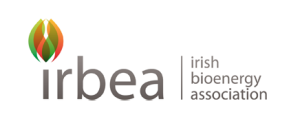Weekly Noticeboard 21/11/15
1. Grid connections becoming tighter.
There is an unprecedented level of interest in solar photovoltaic projects, and a high volume of connection applications to ESB Networks at present. This is creating serious constraints for other renewable generators who may experience long delays and high costs if they come after other applicants in the same area. IrBEA has been represented since 2013 on the CER’s generator connections group by Tom Bruton of BioXL, and at a meeting yesterday (20 Nov) he gave the following feedback to the CER and members of the group:
- The high levels of solar applications are creating serious issues for connectivity of small scale generators. Biogas and biomass CHP plants tend to be rural projects with a fixed location and typically smaller scale. They don’t have flexibility to change location, and generally are not part of a portfolio of projects. There is a need to ensure smaller scale generators are given a reasonable opportunity for timely and cost-effective grid access.
- ESB Networks should provide open public access to its network map and information about grid assets, allowing applicants to take a better-informed view of the likelihood of grid capacity being available.
- The CER should review ESB Networks’ grid application fees. The high cost of this is a deterrent, particularly to smaller-scale applicants, who may long-finger their application to save cash. Any applicant above 500 kW and up to 4MW has to pay a non-refundable €8,500 fee to start the connection process. The ESB Networks’ fee structure is actually an overly important factor in dictating project scale.
The CER has announced its intention to run a consultation process on future connectivity through 2016, both on transitional measures to come in place in 2016, and longer term measures to decide how to handle connection applications. It is important that IrBEA and other renewable electricity stakeholders engage with this process.
2. Alternative Fuels Infrastructure – initial public consultation on Developing a National Policy Framework for Ireland. The Department of Transport, Tourism and Sport (DTTAS) is tasked with transposing the Alternative Fuels Infrastructure Directive (2014/94/EU). DTTAS is working closely with the Department of Communications, Energy and Natural Resources (DCENR) on this. Submissions for the initial public consultation close next Monday 23 November. Padraic O’Neill is coordinating IrBEA’s response – please send any brief thoughts to Padraic by 1pm on Monday padraic@envirovalue.ie
3. Commission adopts first State of Energy Union Report. This week the European Commission adopted the first State of the Energy Union Report which looks at progress made over the last nine months, identifies key action areas for 2016 and provides policy conclusions at Member State, regional and European level. The Energy Union is the major project of the European Commission to coordinate the transformation of European energy supply. The new package includes national factsheets on each Member State. While the report states that the EU as such is on track to meet its target of 20% final energy consumption from renewable sources by 2020, here are interesting conclusions on Ireland (download here) and further below on UK (here):
- Ireland’s 2020 target for energy efficiency is 13.9 Mtoe expressed in primary energy consumption. Even if Ireland’s current primary energy consumption (13.4 Mtoe in 2013) is close to its 2020 target, the margin is small and additional efforts regarding energy efficiency are needed to lower the primary energy consumption further and then keep it at this level afterwards when GDP increases again during the next five year period.
- Ireland has decreased its emissions by 13% between 2005 and 2014. According to its 2015 projections, Ireland is not on track to reach its 2020 target, with a 10% gap as compared to 2005. Transport emissions are expected to increase by 19% between 2013 and 2020 in the absence of investment in public transport, e.g. in Dublin. Agriculture emissions will be stable (2% increase during the same period) – Ireland has identified cost efficient abatement measures but has not taken action yet.
- With a share of 8% of renewable energy in 2013, Ireland is close to its 2013/14 interim targets. However, the existing policy, market and budget framework appears to be insufficient to enable the step-wise achievement of the 2020 objective (16%).
Comparable details for the whole of UK (no separate NI figures in the factsheet) are:
- While the UK is on track to reach its 2020 energy efficiency target, the level of ambition will need to be fully maintained. Given the ongoing review of energy efficiency policy and programmes, this will need to be carefully managed.
- The UK has decreased its emissions by 16% between 2005 and approximated 2014 data. According to own UK 2015 projections, it will over achieve its 2020 target by a 3% margin.
- The UK has made progress towards achieving its renewable energy target of 15% by 2020. In 2013, its RE share reached 5.1% of final energy consumption, compared with an interim target for 2013/2014 of 5.4%. In the last 2 years, the UK has achieved remarkable progress in terms of the share of renewables in electricity generation, with significant deployment of offshore wind. Therefore, more recent provisional data for 2014 suggest a better outcome due to this large increase in the amount of renewable energy produced. With the actual share of renewables in electricity generation reaching 17.8% share in 2014, the UK is ahead of its planned RES-E growth.
More summary details in our November newsletter, out next week.
Michael Hegarty
IrBEA General Manager

